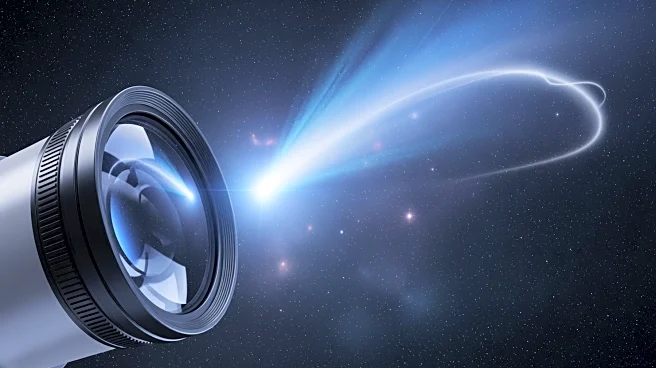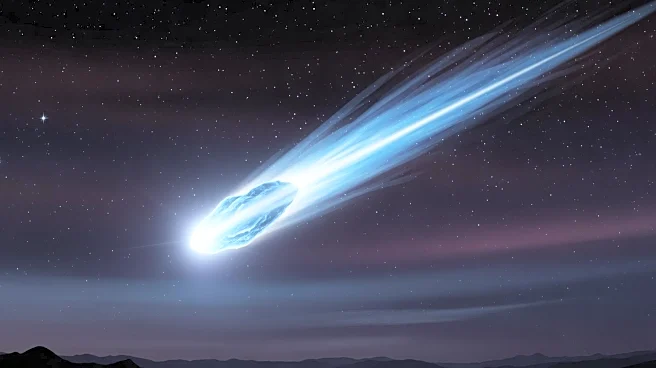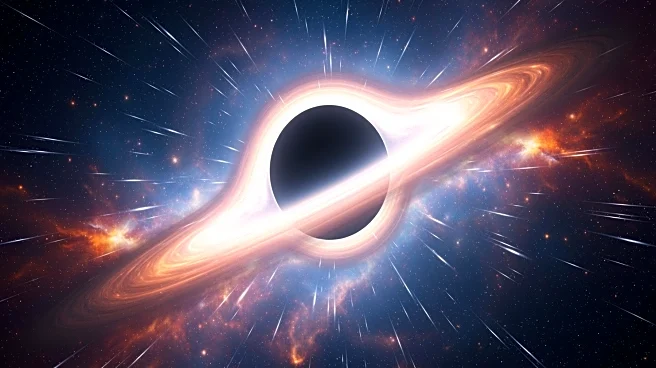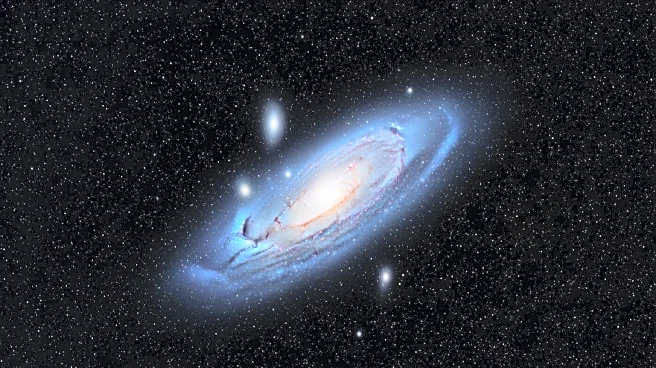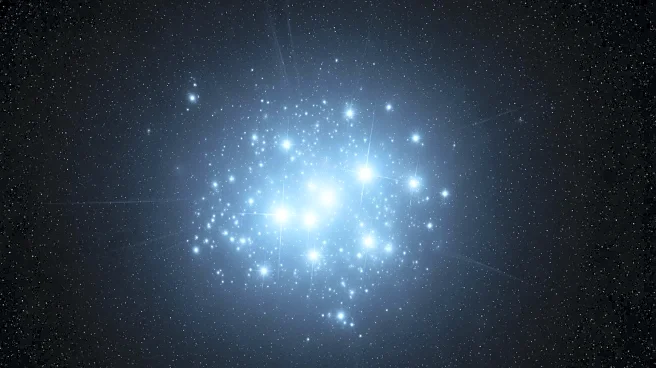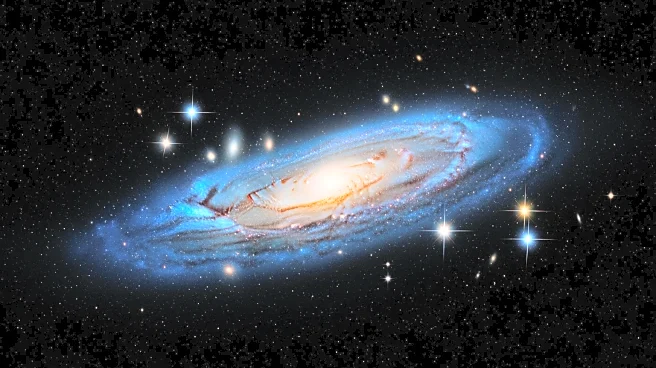What's Happening?
The Vera C. Rubin Observatory in Chile has unveiled its first image, revealing a previously unseen stellar stream emanating from the galaxy M61. This discovery was made even before the observatory's full
science operations have commenced. The image, part of a deep view of the Virgo cluster, shows a thin stream of stars extending from M61, a barred spiral galaxy located 55 million light-years away. The stream, stretching approximately 163,000 light-years, is thought to be the remnants of a dwarf galaxy disrupted by M61's gravitational forces. This finding highlights the observatory's capability to detect low surface brightness objects, offering new insights into galactic formation and evolution.
Why It's Important?
The discovery of the stellar stream is significant as it provides evidence of the dynamic processes involved in galaxy formation. Such streams are remnants of smaller galaxies that have been absorbed by larger ones, offering clues about the history and evolution of galaxies. The Vera Rubin Observatory's ability to detect these faint structures underscores its potential to revolutionize our understanding of the universe. This finding may lead to further discoveries of similar structures around other galaxies, enhancing our knowledge of cosmic interactions and the lifecycle of galaxies.
What's Next?
The Vera Rubin Observatory is set to begin its 10-year Legacy Survey of Space and Time mission, which will create a high-definition time-lapse record of the universe. This mission is expected to uncover more substructures and phenomena, providing a comprehensive view of the cosmos. The scientific community anticipates that the observatory's data will lead to numerous discoveries, advancing our understanding of the universe's structure and history. Researchers will continue to analyze the newly discovered stellar stream, exploring its implications for galactic dynamics and evolution.



